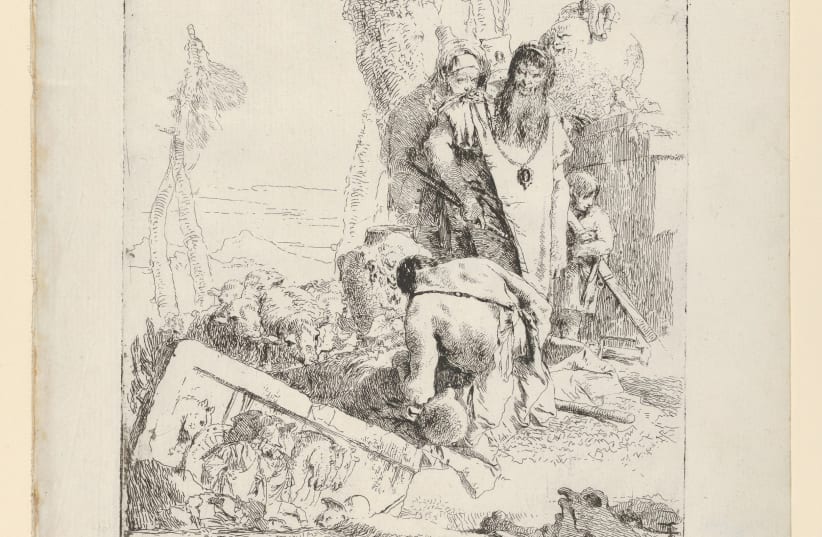Pauline Baer de Perignon, as the decorative family tree at the front of her book demonstrates, is the great-granddaughter of Jules Strauss, an eminent art collector in the Paris of the 1920s and 1930s. He was living in Paris when the Germans occupied France in June 1940. In May 2014, de Perignon happened to meet her cousin Andrew, who worked for the prestigious British auctioneers, Sotheby’s. A chance remark of his set her on an odyssey that was to occupy the next eight years. He said: “I think that Jules was robbed.”
“I think that Jules was robbed.”
Andrew
De Perignon is a Catholic, as are her relatives on her mother’s side. The Jewish blood in her family comes from her father and his forebears. There was no tradition of observance among them. Her father at 18 converted to Catholicism along with two of his cousins.
Moreover, de Perignon discovered that Strauss, together with his wife Marie Louise, were baptized Catholic in 1942. This was, de Perignon observes, “quite common among the Parisian Jewish bourgeoisie during the Occupation, in a usually vain attempt to avoid persecution.”
In Strauss’s case, it appears to have been successful. Although the Nazis requisitioned the family apartment on Avenue Foch, ejecting him and his wife, he was not deported and died aged 82 in Paris in 1943.
In an old catalog, de Perignon discovered that in 1932 her great-grandfather had sold much of his collection of paintings in a big auction, including three Degas, four Renoirs, two Sisley’s and two Monets. Later, she was confused to discover that after the war, Strauss’s widow, Marie Louise, had filed for the restitution of 10 paintings, all of which she claimed had been stolen, but all of which had been included in the 1932 sale.
After 16 years of legal proceedings, the German government ruled that the family had provided insufficient evidence to prove that the works had been stolen or sent to Germany. For a while, de Perignon toyed with the idea that Strauss might have bought back some of the paintings sold in 1932, and then had them stolen.
Eventually, though, she gave up this line of inquiry, and her search concentrated on recovering two works of art that were indisputably the property of Jules Strauss, and were equally certainly taken from him by the Nazis.
ONE WAS a drawing by Giovanni Battista Tiepolo titled “A Shepherd.” De Perignon discovered a document proving both that it was bought by Strauss, and also that in May 1943 it was “acquired” for the Linz Museum. After the war it had been sent back to France, and had been housed in the Louvre ever since.
She fought the French authorities and the Louvre long and hard for the restitution of the Tiepolo, and persistence eventually paid off. In April 2017, in a moving ceremony held in the French Ministry of Culture, the drawing was returned.
In a room filled with relatives, the Minister of Culture, Audrey Azoulay, in a formal act of restitution, handed the drawing back to the Strauss family. Describing Strauss as a connoisseur, she said his erudition had collided with the inhumane Nazi machine.
“Strauss experienced persecution, the wearing of the yellow star, and the arrest of his son-in-law Roger, father of Claude and Jacques, deported on the first convoy out of France in March 1942, and murdered at Auschwitz.”
As for the stolen painting, it was almost by chance that de Perignon discovered that a masterpiece by Nicolas de Largillière, in Strauss’s possession in 1938, was being held by the Dresden museum. The painting had been discovered in 1953 in the basement of the East German Finance Ministry. She and her cousin visited Dresden and were given 10 minutes to view the five-foot-high painting in the archive.
Thus began a six-year battle by de Perignon to convince Dresden and the German government that Largillière’s portrait of Madame de Parabère had been the property of Jules Strauss, that it had been acquired illegally by the Nazi administration, and that it should be returned to Strauss’s descendants.
Determined research revealed that in 1941 the painting had been acquired for a song by a Nazi collaborator, a Swedish woman called Margot Jansson, in a so-called “forced sale,” and then sold on to a Herr Doktor Wolff of the Reichsbank for 4.5 million francs. Jansson was later put on trial for her dealings with the Nazis.
The evidence was assembled and presented to the Dresden museum authorities. At first they were far from convinced. However objection after objection did not deter de Pergnon. Her persistence finally led Dresden, in September 2019, to offer to restore the painting to her, on the condition that she would immediately sell it back to them.
She refused. She felt it would be a false victory, a compromise that would fail to acknowledge the injustice her great-grandfather had been forced to endure. The painting had to be returned to the Strauss family.
Matters were at this impasse when the first edition of this book, written in French, appeared in 2020. How de Perignon’s virtual defeat was turned into glorious victory is set out in the Epilogue in this excellent English translation by Natasha Lehrer.
In short, the Dresden Museum finally capitulated, and today the portrait of Madame de Parabère, purchased by Jules Strauss in 1938, hangs in the sitting room of his great-granddaughter, Pauline Baer de Perignon, in her Parisian apartment.
This story of persistence in the face of obstacles and setbacks is as absorbing as a thriller, while de Perignon’s efforts to see justice done to her great-grandfather are inspiring and moving in equal measure. The Vanished Collection is a recommended read.
THE VANISHED COLLECTIONBy Pauline Baer de PerignonNew Vessels Press239 pages; $17.95

